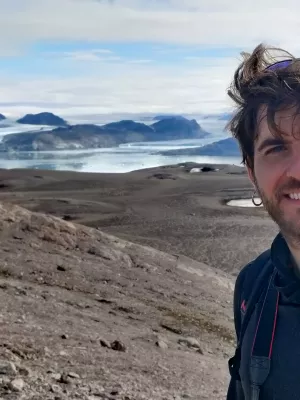
Albert Brangarí
Researcher

Deciphering microbiomes dozens of meters under our feet and their edaphoclimatic and spatial drivers
Author
Summary, in English
Microbes inhabiting deep soil layers are known to be different from their counterpart in topsoil yet remain under investigation in terms of their structure, function, and how their diversity is shaped. The microbiome of deep soils (>1 m) is expected to be relatively stable and highly independent from climatic conditions. Much less is known, however, on how these microbial communities vary along climate gradients. Here, we used amplicon sequencing to investigate bacteria, archaea, and fungi along fifteen 18-m depth profiles at 20–50-cm intervals across contrasting aridity conditions in semi-arid forest ecosystems of China's Loess Plateau. Our results showed that bacterial and fungal α diversity and bacterial and archaeal community similarity declined dramatically in topsoil and remained relatively stable in deep soil. Nevertheless, deep soil microbiome still showed the functional potential of N cycling, plant-derived organic matter degradation, resource exchange, and water coordination. The deep soil microbiome had closer taxa–taxa and bacteria–fungi associations and more influence of dispersal limitation than topsoil microbiome. Geographic distance was more influential in deep soil bacteria and archaea than in topsoil. We further showed that aridity was negatively correlated with deep-soil archaeal and fungal richness, archaeal community similarity, relative abundance of plant saprotroph, and bacteria–fungi associations, but increased the relative abundance of aerobic ammonia oxidation, manganese oxidation, and arbuscular mycorrhizal in the deep soils. Root depth, complexity, soil volumetric moisture, and clay play bridging roles in the indirect effects of aridity on microbes in deep soils. Our work indicates that, even microbial communities and nutrient cycling in deep soil are susceptible to changes in water availability, with consequences for understanding the sustainability of dryland ecosystems and the whole-soil in response to aridification. Moreover, we propose that neglecting soil depth may underestimate the role of soil moisture in dryland ecosystems under future climate scenarios.
Department/s
- Dept of Physical Geography and Ecosystem Science
- MERGE: ModElling the Regional and Global Earth system
- Microbial Biogeochemistry in Lund
- Microbial Ecology
- BECC: Biodiversity and Ecosystem services in a Changing Climate
Publishing year
2024-01
Language
English
Publication/Series
Global Change Biology
Volume
30
Issue
1
Document type
Journal article
Publisher
Wiley-Blackwell
Topic
- Soil Science
Keywords
- aridity
- biogeography
- climate change
- deep soil
- microbial biodiversity and function
- soil depth
- water heterogeneity
Status
Published
Research group
- Microbial Biogeochemistry in Lund
- Microbial Ecology
ISBN/ISSN/Other
- ISSN: 1354-1013

